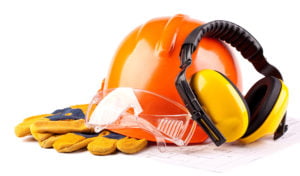 New EU’s Personal Protective Equipment (PPE) Regulation 2016/425
New EU’s Personal Protective Equipment (PPE) Regulation 2016/425
Back on the 21st April 2018, the EU’s Personal Protective Equipment (PPE) Regulation 2016/425 came into force.
Personal protective equipment (PPE) are products that the user can wear or hold, in order to be protected against hazards either at home, at work or whilst engaging in leisure activities. Statistics on fatal and major work accidents underline the importance of protection and prevention, for which personal protective equipment plays a very important role.
The new regulation applies to not only manufacturers but also the whole supply chain. Everyone involved must ensure their PPE meets with the standard requirements, be it in the design, manufacture, marketing, supply or distribution of PPE.
The new Regulation has been implemented for a variety of reasons. It will be enforced in the UK by the PPE (Enforcement) Regulations 2018. The previous directive contained old legislation that was not necessarily suitable for the current market as it has developed.
It defines legal obligations to ensure that PPE on the EU market provides the highest level of protection against hazards. It has also been aligned with other product supply law, such as electrical equipment, to ensure consistency across sectors.
The new Regulation builds on the existing requirements that businesses and employees are entitled to expect that the PPE they purchase and use is fit for purpose and will protect them accordingly and the new regulations should give businesses and their employees increased reassurance of the efficiency and safety of available PPE in the market.
If you are responsible for buying PPE, make sure that:
- The product is CE marked;
- It is supplied with instructions (in English)
- it is accompanied by a Declaration of Conformity (or weblink where this can be found);
There are currently no changes to the law on the use of PPE at work.
One of the largest overlooked factors for PPE is Facefit testing. We are often asked to provide Qualitative face fit testing (QFFT) at short notice where a new supplier has required certification of this. The test provides employers with written evidence that respiratory protective equipment (RPE) including half mask respirators and disposable face masks ‘fit’ employees, which in our eyes should be done as a standard as part of employers PPE processes.
Face fit testing can be provided for both groups on-site and individuals able to visit our premises in Warmley, Bristol.
Testing comprises an initial sensitivity test, followed by a number of practical exercises, designed to mimic typical patterns of movement employees may experience whilst wearing RPE.
There are a number of different reasons why an individual might fail a fit test, which in many cases is down to the poor physical ‘fit’ of the mask. Should this occur, we can recommend suitable alternatives that are readily available from a range of safety equipment suppliers.
The general requirements for the repeat of face fit testing are that it should be carried out ‘regularly’ or if the wearer:
- gains or loses weight
- undergoes significant dental work
- develops facial changes (scarring, moles etc.) within the face seal area
Companies have varying policies on the frequency of testing, which can range from one to every three years and is often dependent on the risk to which employees might be exposed. We advise companies to repeat testing at least every two years. This also provides an opportunity to discuss the type of respiratory protective equipment (RPE) being worn with employees and reinforce good practice with regard to wearing, fitting, storage and general use

 New EU’s Personal Protective Equipment (PPE) Regulation 2016/425
New EU’s Personal Protective Equipment (PPE) Regulation 2016/425